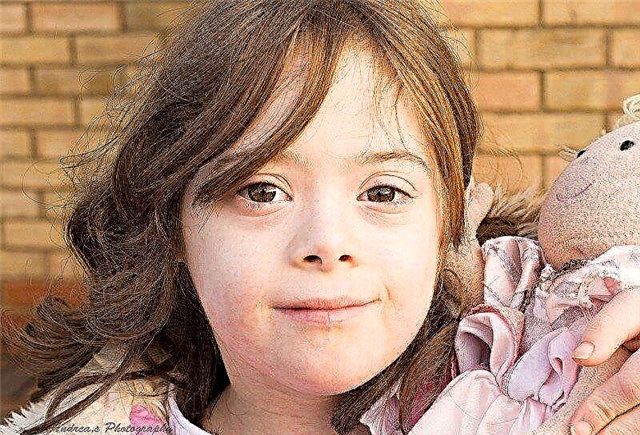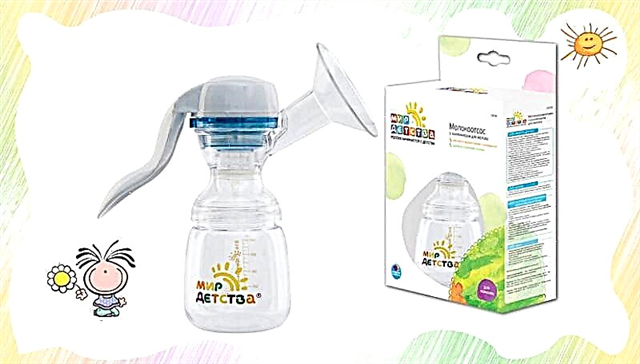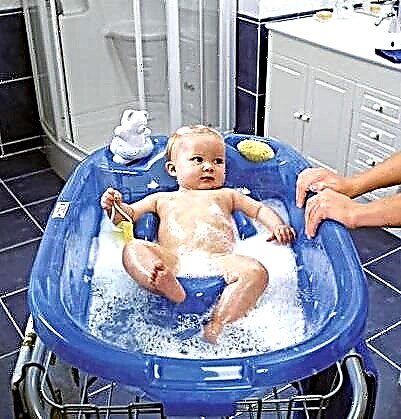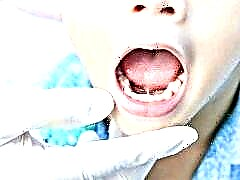
Parents who are faced with a shortening of the sublingual ligament in children often ask themselves whether an operation is really necessary, whether it is possible to cope with the problem in other ways and what the consequences may be. There are many methods for correcting a congenital anomaly, and the choice of the optimal one largely depends on the type of pathology and the age of the child.

About pathology
In the mouth of each person there are three straps or so-called bridles. One connects the upper lip with the upper row of gums, the second similarly connects the lower lip with the jaw. The third is the sublingual. This frenulum connects the tongue to the floor of the mouth, providing it with a normally movable connection. She does not interfere with sticking out the tongue, wiggling it, uttering the sounds of speech, making sucking and swallowing movements.
However, about one in a thousand newborns is born with a malformation of this sublingual cord. In most cases, the ligament is shortened for hereditary reasons, because one of the baby's relatives had a similar problem. Non-hereditary types of anomalies are less common, and experts tend to associate their appearance with a negative effect on the fetus in the first trimester of pregnancy - taking medications for the expectant mother, living in ecologically unfavorable regions, viral diseases for up to 12 weeks, smoking, drinking alcohol, severe stress, and so on.

An abnormal bridle is called ankyloglossia in medicine. The shorter ligament limits the rise and movement of the tongue. Sucking and swallowing functions may suffer, later, if measures are not taken at an early age, disturbances in sound reproduction, pronunciation, salivation, and malocclusion may form. In boys, pathology, according to statistics, is detected almost 3 times more often than in girls.
In a quarter of cases, the problem is detected in the very first days of the baby's life, even in the maternity hospital. A short ligament does not allow the baby to properly grip and hold the nipple, feeding turns into a real test for the mother and child. The baby often remains hungry because he cannot suck out the amount of milk he needs. Babies try to make it easier for themselves to feed themselves by biting the nipple with their gums, which leads to injury to the nipple and the formation of deep bleeding cracks.
If an abnormality is not identified in early infancy, other problems are likely in the future. - a short or very dense ligament that has grown together with the muscles of the tongue will not allow the child to pronounce sounds normally, the speech will be illegible. With the formation of an incorrect bite, problems with chewing and swallowing food are not excluded, which can lead to diseases of the gastrointestinal tract.
Therefore, ankyloglossia needs early correction, preferably in the pre-speech period.

Indications for surgery
Surgical correction of the length of the sublingual ligament can be performed using several methods. At an early age, a simple operation called a frenulotomy is performed. After 5 years, if the correction has not been performed earlier, frenuloplasty is performed. Indications for surgical treatment are:
- the child has a severe limitation of the mobility of the tongue, in which the functional are especially severely impaired - the child cannot fully eat, drink, swallow, suck;
- the child has special types of ankyloglossia with a wide and very dense bridle, which is devoid of elasticity, spliced with the muscle fibers of the uvula;
- child's age from 5 years.
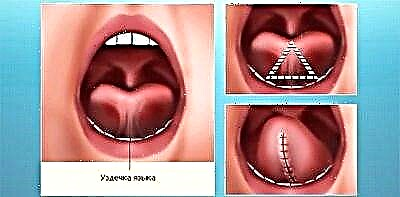
Conservative therapy - special speech therapy massage, stretching exercises are considered effective only up to the age of five, then the anomaly can only be corrected by undercutting.
If a problem is found in the maternity hospital, undercutting is considered the best way out of the situation. In the future, the expediency of the operation is decided exclusively by the doctor. For example, with a mild degree, if the bridle is shortened slightly, it is quite elastic and does not interfere with the child's normal nutrition, classes with a speech therapist often help, and the child does not need to cut the bridle.
If the limitation of tongue mobility is moderate or severe, surgical treatment is usually recommended. His doctor can also advise in the event that the conservative treatment, which the parents resorted to, did not have the desired effect.
The operation is recommended if:
- in a baby-infant, the grip of the nipple of the mother's breast is disturbed, breastfeeding is difficult;
- the child is slowly gaining weight, there are signs of hypotrophy;
- the formation of an incorrect bite has begun;
- there is a displacement of the dentition.

There are a number of contraindications and restrictions under which the question of carrying out the operation necessary for the baby can be postponed for a while. They will not rush to the operation if the child has cancer, blood clotting disorders, an acute infectious process, an inflammatory process of any localization, dental diseases. In these cases, the operation is performed after preliminary therapy of the underlying disease, unless otherwise indicated.

How is the operation performed?
The easiest method to fix the problem with a shortened sublingual ligament is pruning at the hospital. In the first days of a baby's life, this procedure can hardly even be called an operation. A frenulotomy is performed with surgical scissors without anesthesia for a few seconds. The bridle at such an early age does not have blood vessels, nerve endings, the child does not have any unpleasant sensations undercutting - this is not painful and not scary.
Immediately after undercutting the lingual frenum, the child is applied to the mother's breast - the problem with sucking and gripping the nipple is completely eliminated without any long-term consequences. A transverse incision made to a newborn in a maternity hospital is not sutured, and no further treatment is prescribed. The wound itself heals very quickly and does not bother the newborn in any way.
If the pathology was not detected in the maternity hospital and became obvious after the mother and baby were discharged from the maternity hospital, frenulotomy can be performed in the surgery room of a polyclinic or children's hospital under local anesthesia - a transverse incision is made with scissors, scalpel.
Stitches are usually not required, blood loss is minimal, and recovery is quick at home.

If the pathology is detected at the age of 2-3 years, the operation is carried out already in stationary conditions. This is due to the fact that the structure of the hyoid ligament is changing - blood vessels and nerve endings appear in it. The frenulotomy procedure is performed under local anesthesia, after a transverse incision, several self-absorbable sutures are applied.
You can do the operation with a laser - this method is bloodless, gentle, recovery after it is faster. The price of laser removal of the problem is from 2 to 5 thousand rubles, depending on the severity of the clinical case.
Sometimes the question of performing an operation arises much later - after 5 years. At this age, a more complex surgical treatment is performed - frenuloplasty of the hyoid ligament. The procedure is excision of the frenum and its subsequent plasty - creating a normal ligament and fixing it with sutures at the desired attachment point. Sometimes the surgeon has to not only necessarily cut the bridle, but also to correct the dentition - it all depends on the degree and severity of ankyloglossia. The operation takes place under general anesthesia and requires suture and hospital observation.

The child's impaired speech after plastic surgery cannot recover on its own. The rehabilitation program must include speech therapy classes to correct previously formed speech defects.
Preparation for the procedure
At the age of 5 years, no significant preparation is required for surgical treatment of a shortened hyoid frenum. The operation itself is considered a low-traumatic intervention that does not threaten consequences. Most babies easily tolerate the procedure, and the recovery period proceeds without complications.
Before frenuloplasty a preliminary examination is necessary, which includes blood tests (general and blood clotting tests), fluorographic examination (jaw images).
Before a lighter frenulotomy, it is recommended to feed the baby, but not overfeed. A light feeling of satiety will calm the child. If the operation takes place under general anesthesia in a hospital, it is not recommended to eat before it.
Experts advise mothers to pay attention to psychological aspects, especially if the child is already out of infancy. You do not need to "wind up" yourself, you should remain calm. If the mother is calm and confident, then the child will not experience severe stress.

How is the recovery going?
After the uvula frenum is trimmed, the rehabilitation process usually goes quickly - it takes from 2-3 to 7 days... After a more complex frenuloplasty operation, the rehabilitation period can take up to one and a half weeks.
Compliance with all medical recommendations will help a faster recovery. First of all, parents should monitor oral hygiene - the child should rinse the oral cavity with antiseptic solutions, thoroughly clean the teeth, avoid getting an infection - for this, you need to ensure that the child does not take hands or foreign objects in his mouth.
If you notice that the surgical site is covered with a light white bloom, you should not panic - this is not a sign of inflammation, but the initial stage of scar formation. Continue rinsing and stay calm. If there are signs of redness, purulent yellowish or greenish plaque, swelling, soreness in the mouth, you should immediately visit a doctor - it is possible that an infection has joined.

During the recovery period, the child is not recommended to eat too hard food, which requires a long and thorough chewing, you should not eat sweets, after all, sugar is an excellent breeding ground for pathogenic bacteria. To avoid the appearance of painful sensations, you should not give your baby sour, salty, carbonated drinks.
It is important to apply the baby to the breast as soon as possible after frenulotomy - the composition of breast milk and the antibodies contained in it will contribute to the rapid healing of the wound without consequences.
Children who have entered the speech period of development, should speak less during rehabilitation... Try to explain to your child that this is an interesting game of being silent. Create quiet games to keep your tongue muscles from tense. After the scar has healed, visit a speech therapist with your child to receive an individual rehabilitation course - exercises and gymnastics, since the baby will not speak correctly even after successful surgical treatment.

To do it or not?
So we come to the main question - to agree to the operation or not. You need to solve it with your doctor. If the doctor insists, then there is nothing to be afraid of - frenulotomy is a necessary intervention that will help the child develop normally in the future and not experience problems in communication, education, nutrition.
Sure, the sooner such an operation is performed, the better for everyone. Ankyloglossia will not go away by itself, will not "outgrow" over time, as some moms and dads think. If there is such a problem, it will have to be solved anyway. If you do not want to do the operation, and the problem itself is not severe, there is time up to 3 years to try to stretch the ligament with speech therapy exercises, articulatory gymnastics. In most cases, this helps a lot. But then, if the problem is not resolved, you should not persist - prompt correction for this anomaly is not as terrible as it seems to the parents.

If the pathology is initially severe or moderate, do not waste your time and effort on speech therapy methods, carry out surgical treatment as early as possible, before the child enters the period of active speech formation.
There are a lot of reviews on the Internet from parents who decided on an operation for their child and did not regret it.


